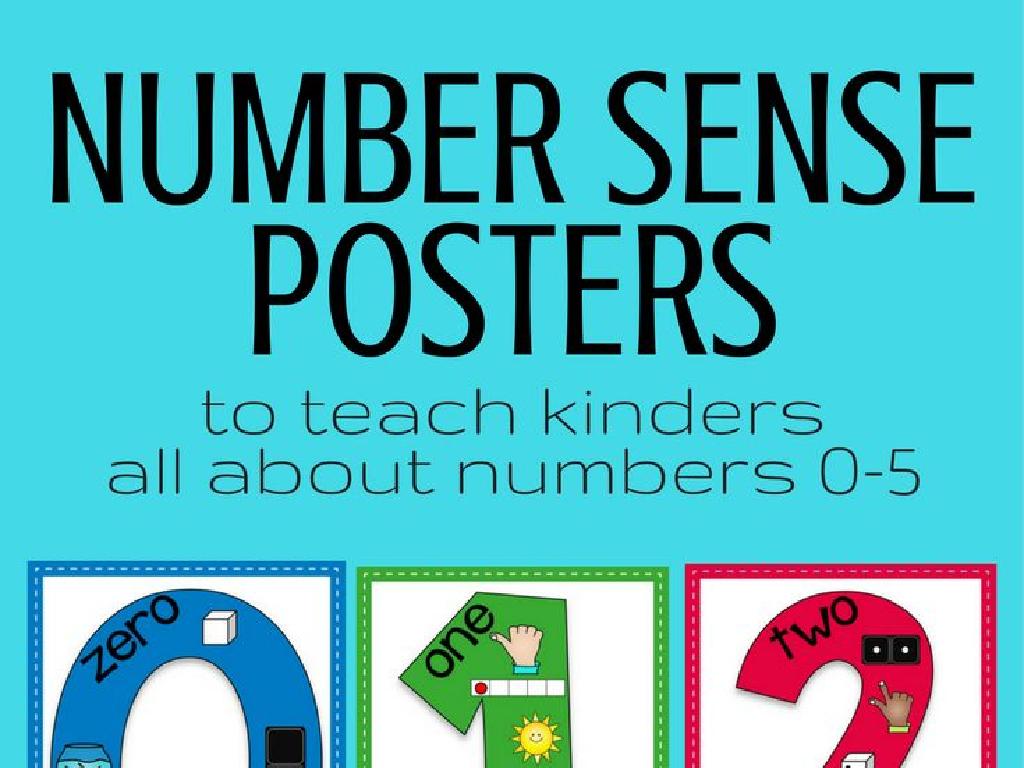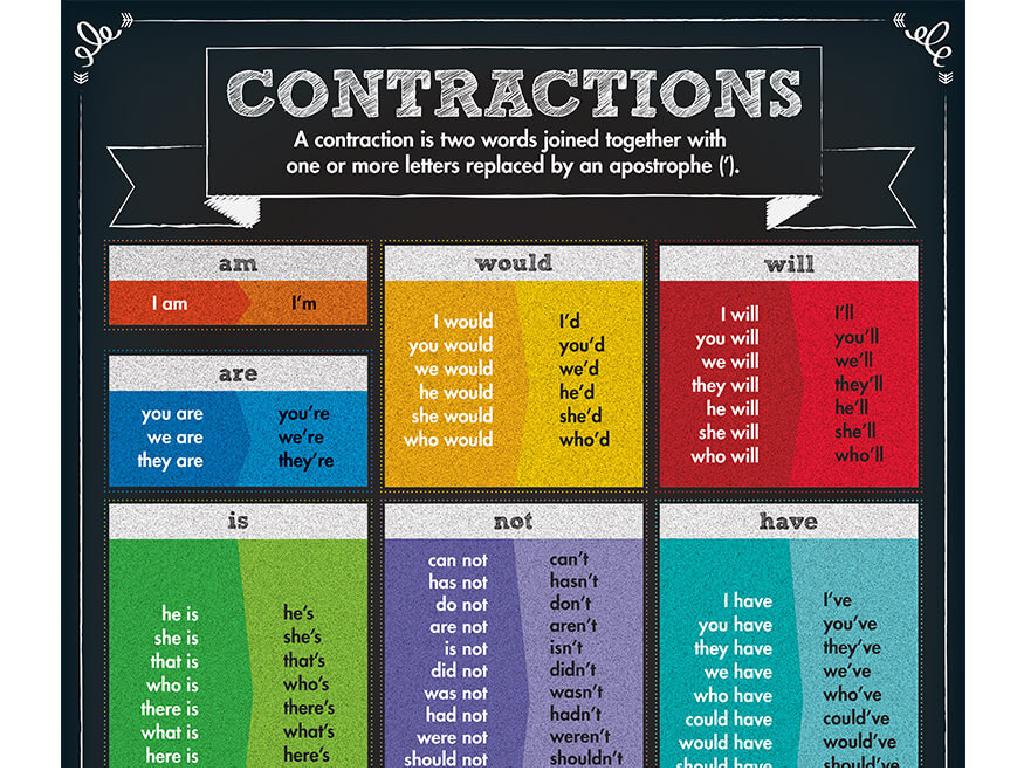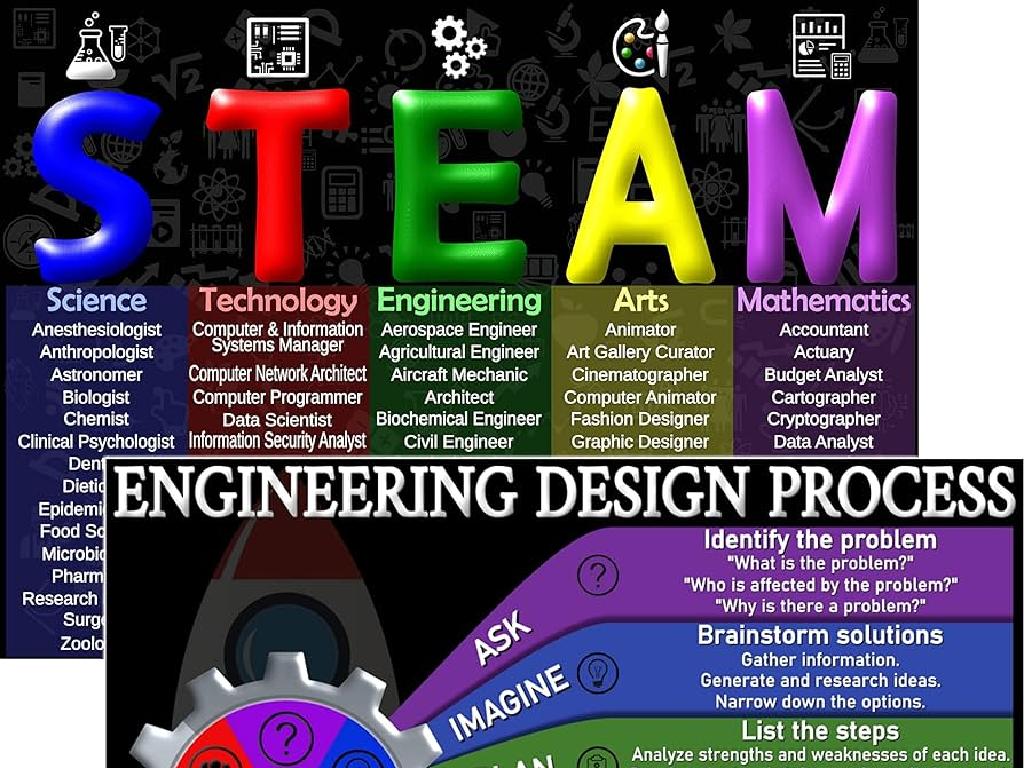How Does Matter Move In Food Chains?
Subject: Science
Grade: Eighth grade
Topic: Ecological Interactions
Please LOG IN to download the presentation. Access is available to registered users only.
View More Content
Ecological Interactions: Matter in Food Chains
– Explore our environment’s ecology
– Learn about food chains
– A food chain shows how energy and nutrients flow from one organism to another.
– Matter’s journey through ecosystems
– Matter moves as organisms eat and are eaten, decompose, and contribute to the soil.
– Significance of matter cycling
– This cycling is crucial for nutrient availability and ecosystem health.
|
This slide introduces students to the concept of ecological interactions with a focus on how matter moves within food chains. Begin by discussing the importance of understanding our environment and the interconnectedness of life within it. Explain food chains as a model for how energy and nutrients pass from producers to consumers and decomposers. Emphasize the continuous movement of matter as it cycles through ecosystems, highlighting the roles of photosynthesis, consumption, and decomposition. Stress the significance of these cycles in maintaining the balance and health of ecosystems. Encourage students to consider how human activities might impact these natural cycles.
Understanding Food Chains
– Define a Food Chain
– A sequence of organisms each dependent on the next as a source of food.
– Roles in a Food Chain
– Producers make food, consumers eat it, decomposers break down dead matter.
– The Sun’s role in Food Chains
– The Sun provides energy for producers to create food via photosynthesis.
– Matter’s movement through Chains
|
This slide introduces the concept of a food chain, which is fundamental in understanding ecological interactions. A food chain is a linear network of links in a food web starting from producer organisms and ending at apex predator species or decomposers. Producers, such as plants, are organisms that create their own food using sunlight. Consumers are animals that eat other organisms, and decomposers break down dead material, returning nutrients to the environment. The Sun is the primary energy source for all food chains. In this lesson, students will learn how matter moves through a food chain, starting with the Sun’s energy being converted into chemical energy by producers, then transferred to consumers, and finally to decomposers. Emphasize the importance of each role and how energy and matter flow in an ecosystem.
Producers: The Foundation of Food Chains
– Plants as primary producers
– Producers like plants create their own food using sunlight.
– Photosynthesis basics
– Photosynthesis transforms sunlight into chemical energy.
– Energy conversion in plants
– Plants convert light energy into glucose, a usable form.
– Producers’ role in ecosystems
– They are the starting point for energy flow in food chains.
|
This slide introduces the concept of producers in ecological food chains, focusing on how plants, as primary producers, are capable of making their own food through the process of photosynthesis. It’s essential to explain that photosynthesis is the method by which plants convert light energy from the sun into chemical energy, which is stored as glucose and used to fuel the plant’s activities. Emphasize the importance of producers in supporting the entire food chain, as they provide the energy source for all other organisms. Discuss the role of sunlight, carbon dioxide, and water in the photosynthesis equation. Encourage students to think about how the energy from the sun is transferred through the food chain, starting with the producers.
Consumers: Energy Transfer in Food Chains
– Primary, Secondary, Tertiary Consumers
– Organisms that eat producers or other consumers e.g., grasshopper, frog, snake
– Energy Movement Up the Chain
– Energy is passed as one organism eats another
– Consumers Across Ecosystems
– Desert: lizard; Ocean: fish; Forest: bear
– Energy Efficiency in Transfers
|
This slide focuses on the role of consumers in the transfer of energy within a food chain. Primary consumers are herbivores that eat producers like plants. Secondary consumers are carnivores that eat primary consumers, and tertiary consumers are top predators eating secondary consumers. Energy moves up the food chain as each level of consumer feeds on the level below. Provide examples of consumers in different ecosystems to illustrate the diversity of consumer roles. Discuss the concept of energy efficiency, noting that not all energy is transferred from one trophic level to the next due to energy loss as heat and life processes.
Decomposers: Recyclers of the Ecosystem
– Decomposers’ role in food chains
– Organisms like fungi & bacteria decompose dead matter, returning nutrients.
– How decomposers break down matter
– They convert dead tissue into forms other organisms can use.
– Their part in nutrient cycling
– Decomposers release nutrients back into the soil, aiding plant growth.
– Impact on soil fertility
– Healthy soil supports diverse plant and animal life.
|
Decomposers play a crucial role in maintaining the balance of ecosystems by breaking down dead and decaying organic matter. This process recycles nutrients and is essential for nutrient cycling, which ensures that essential minerals are available for plants to absorb and use for growth. This, in turn, supports soil fertility, making it rich and productive for plant life, which is the foundation of food chains. By understanding the function of decomposers, students can appreciate the complexity and interdependence of ecological systems. Encourage students to think of examples of decomposers they know and how these might affect their local environment.
Matter and Energy in Food Chains
– Conservation of Mass
– Matter is neither created nor destroyed
– Energy Flow vs. Matter Recycling
– Energy flows one way, matter cycles
– Understanding Trophic Levels
– Producers to top predators: levels of energy
– Efficiency at Each Level
– Not all energy is transferred up the chain
|
This slide introduces the fundamental concepts of how matter and energy move within food chains, which is a key component of ecological interactions. The Law of Conservation of Mass states that matter cannot be created or destroyed in an isolated system, which applies to ecosystems where matter is recycled. Energy flow, in contrast, is unidirectional, moving from the sun to producers and then through various consumers. Trophic levels describe the positions organisms occupy in a food chain, with each level representing a step in the flow of energy. Efficiency refers to how much energy is passed on from one trophic level to the next, which is typically about 10%. This concept is crucial for understanding why energy diminishes as it moves through an ecosystem. Encourage students to think about the implications of these principles on the environment and conservation efforts.
Food Webs: Interconnected Systems
– Food webs link multiple chains
– A network of food chains showing how energy flows between organisms
– Changes impact the whole web
– Removing or adding species can disrupt ecological balance
– Analyzing a local ecosystem
– Study how species in our area interact and depend on each other
– Balance within food webs
|
This slide aims to explain the concept of food webs as an extension of food chains, illustrating the complex interdependencies between different organisms in an ecosystem. Emphasize that food webs are not isolated chains but a network where each link is connected. Highlight the importance of each species and how changes, such as extinction or introduction of a new species, can have cascading effects on the entire web. Use a local ecosystem as a concrete example to help students visualize these interactions and understand the delicate balance that exists within food webs. Encourage students to think about how human activities might affect these balances.
Human Impact on Food Chains
– Effects of pollution on ecosystems
– Toxins from pollution disrupt food chains, harming wildlife and habitats.
– Consequences of overhunting
– Overhunting leads to species decline and imbalance in food chains.
– Overfishing impacts
– Overfishing depletes fish stocks, affecting marine food chains.
– Conservation and protection efforts
– Initiatives like protected areas and sustainable practices help preserve food chains.
|
This slide addresses the various ways in which human activities negatively affect food chains. Pollution introduces harmful substances into ecosystems, which can accumulate in the food chain and lead to the decline of species and the destruction of habitats. Overhunting and overfishing are direct human actions that can lead to the depletion of key species within food chains, causing imbalances and the potential collapse of ecosystems. Highlight the importance of conservation efforts, such as creating protected areas, enforcing hunting and fishing regulations, and promoting sustainable practices to mitigate these impacts. Encourage students to think critically about how their own actions can contribute to the preservation of balanced ecological interactions.
Class Activity: Building a Food Web
– Create your own food web diagram
– Label producers, consumers, decomposers
– Producers make food, consumers eat it, decomposers break down waste
– Trace matter’s movement in the web
– Matter cycles from plants to animals to decomposers
– Discuss the role of each organism
|
In this activity, students will construct their own food web to visualize the flow of matter through an ecosystem. They will identify various organisms as producers (plants), consumers (herbivores, carnivores, omnivores), and decomposers (fungi, bacteria). Students should illustrate how matter, in the form of nutrients, moves from producers to consumers and finally to decomposers, which recycle nutrients back into the soil to be used by producers again. This exercise will help students understand the interconnectedness of organisms and the importance of each group in maintaining the balance of the ecosystem. Possible variations of the activity could include creating food webs for different ecosystems or comparing food webs to show how matter moves differently in aquatic vs. terrestrial environments.
Food Chains: Conclusion and Recap
– Review key food chain concepts
– Producers, consumers, decomposers and their roles
– Significance of each food chain link
– Each organism has a vital role, ensuring ecosystem stability
– Engage in Q&A session
– Opportunity to clarify doubts and solidify understanding
– Reflect on ecological balance
|
This slide aims to consolidate the students’ understanding of the food chain and its components. Begin by reviewing the roles of producers, consumers, and decomposers, emphasizing how energy and matter flow through the ecosystem. Highlight the importance of each organism in maintaining the balance of the ecosystem, and how the removal of one link can disrupt the chain. Encourage students to ask questions to clarify any uncertainties they may have, fostering an interactive learning environment. Conclude by reflecting on the delicate balance of ecological interactions and the importance of conservation efforts to maintain these vital systems.





